Of all the 400th anniversary tributes to Shakespeare, this ramble through an allotment just outside Brighton has to be one of the oddest, and most unexpectedly moving. Brighton Festival has a reputation for site-specific work, rediscovering secret pockets of the city and surroundings. This year it’s the turn of Roedale Allotments, a sprawling site of 200-plus plots hidden within a tree-lined valley. It’s a ramshackle rural idyll with a distant twinkle of the sea.
Artist Marc Rees stumbled upon this “horticultural, higgledy-piggledy metropolis” a couple of years ago. He had been looking for something else: the site of the last dwelling place of 19th-century Shakespearean scholar James Orchard Halliwell-Phillips. The batty biographer and collector spent his final 12 years in a series of conjoined mock-Tudor sheds, which he erected for himself on Hollingbury Copse. The connection with the set-up at Roedale struck Rees at once.
Shakespeare, you feel, would have been fascinated by these allotments
Digging for Shakespeare trains these two elements – the hermetic final years of the Victorian eccentric, and the bubble of The Good Life that is this modern day allotment – into a promenade piece. Providing the textual twine are Shakespeare’s plentiful horticultural metaphors, in which the garden often stands for the management of sexual desire, or the running of the state. Rees leads the way himself, in flatcap and tweeds, with a loudhailer and a tattered pair of his own late father’s gardening gloves.
It would have been so easy to have actors pop out from potting sheds spouting chunks of Shakespeare. What Rees has opted for instead – a mix of community volunteers and knitted dolls – is no doubt cheaper, but feels richer. Hollingbury Park Bowls Club meet us at the start, shuffling out from the trees to stand in for the moving forest in Macbeth. Young members of The Theatre Workshop play a chorus of fairies in flailing camouflage gear. Cons and Nikes peek out beneath as they rustle past us on the bluebell path toward the allotments.
Little is spoken beside the Latin names of the plants mentioned in Shakespeare texts. But we do get a mini lecture by local academic Charles Nicholls, whose 2014 newspaper article "Shakespeare’s scholar tramp" first alerted Rees to the story of Halliwell-Phillips. We learn that “HP” held the greatest collection of Shakespeare-related objects in the world, from early quartos to papers from minor lawsuits and “the heel of the shoe kicked off by Mrs Siddons in throwing back her velvet train whilst performing the part of Constance in King John". He was obsessive, unconventional, cavalier. In one remaining photograph, otherwise typically Victorian, he is waggling his fingers on his nose.
 In a brief but vivid encounter, HP is beautifully portrayed by Spanish performer Guillermo Weickert (pictured right). Emerging dustily into the sunshine in a fur coat fringed with stoats, he dances ecstatically around his herb pots as if no one were watching. Ivy curls around his top hat, as it now curls round his gravestone in nearby Patcham.
In a brief but vivid encounter, HP is beautifully portrayed by Spanish performer Guillermo Weickert (pictured right). Emerging dustily into the sunshine in a fur coat fringed with stoats, he dances ecstatically around his herb pots as if no one were watching. Ivy curls around his top hat, as it now curls round his gravestone in nearby Patcham.
The last hour of the piece is spent in a free wander around the allotments, where participating gardeners play host to doll versions of Shakespeare characters, knitted in witty detail by Annie Hardy. Ophelia sits by a pond. Falstaff is propped up in a picnic chair, his drunkard’s nose meticulously mottled in wool. Bottom lounges by a cluster of Forget-me-nots. One gardener pops out of her shed to show us what’s under Macbeth’s kilt.
Shakespeare, you feel, would have been fascinated by these allotments, where assorted characters toil away in uncommon proximity, tending an irregular patchwork of dreams. Forget Hove’s beach huts, or the houseboats at Shoreham. In the spring, Roedale Allotments is a precious picture of Englishness in all its wonderfully odd glory.
HP, we’re told, relished “the daily mundane texture of Shakespeare’s life”. He also never finished cataloguing his collection. True to its inspiration, Digging for Shakespeare is eccentric, loosely composed, and beguiled by the prosaic. But it is not without strong, resonant images. At the end, the Bard’s portrait appears, coloured in emerald by Brighton street artist Pure Evil. He looks a little like the Green Man, mythic folk symbol of fertility and regeneration. Shakespeare was always going to be celebrated this year. Community-rooted pieces such as this one ensure that he is also being reclaimed and reseeded.
- Digging for Shakespeare is at Brighton Festival until 22 May
- Read more Brighton Festival reviews on theartsdesk

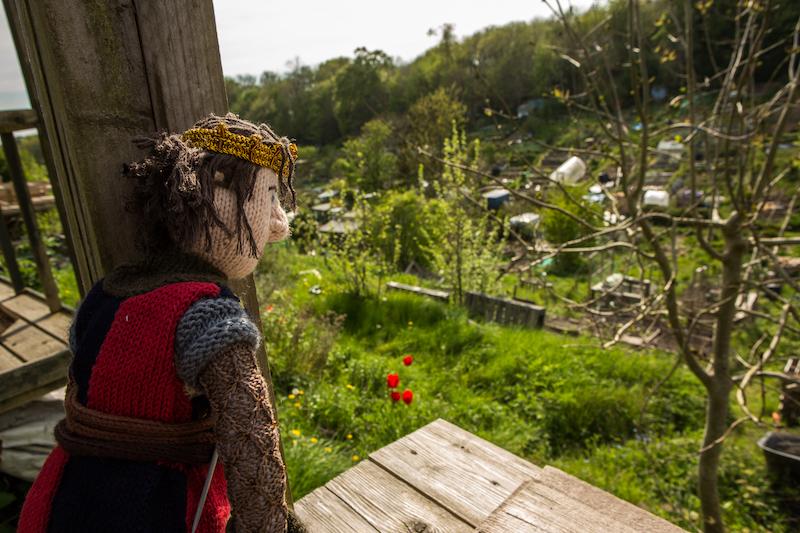

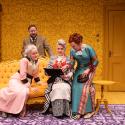



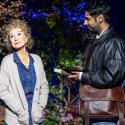


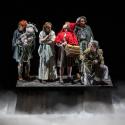
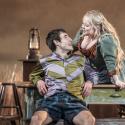

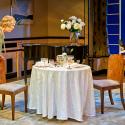
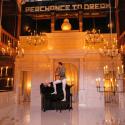
Add comment